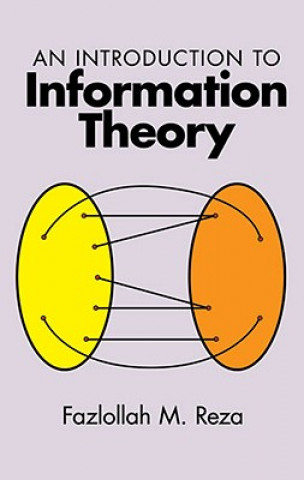
Kod: 02569717
Introduction to Information Theory
Autor Fazlollah M. Reza
PREFACE CHAPTER 1 Introduction 1-1. Communication Processes 1-2. A Model for a Communication System 1-3. A Quantitative Measure of Information 1-4. A Binary Unit of Information 1-5. Sketch of the Plan 1-6. Main Contributors to ... więcej
- Język:
 Angielski
Angielski - Oprawa: Miękka
- Liczba stron: 528
Wydawca: Dover Publications Inc., 2003
- Więcej informacji o książce

101.20 zł
Zwykle: 119.18 zł
Oszczędzasz 17.98 zł
Dostępność:
50 % szansa Otrzymaliśmy informację, że książka może być ponownie dostępna. Na podstawie państwa zamówienia, postaramy się książkę sprowadzić w terminie do 6 tygodni. Gwarancja pełnego zwrotu pieniędzy, jeśli książka nie zostanie zabezpieczona.
Otrzymaliśmy informację, że książka może być ponownie dostępna. Na podstawie państwa zamówienia, postaramy się książkę sprowadzić w terminie do 6 tygodni. Gwarancja pełnego zwrotu pieniędzy, jeśli książka nie zostanie zabezpieczona.Przeszukamy cały świat
Zobacz książki o podobnej tematyce
-

Chicka Chicka Boom Boom
29.34 zł -23 % -

Madonna Confessions
156.56 zł -11 % -

Market Leader 3rd Edition Extra Advanced Coursebook with DVD-ROM Pack
149.57 zł -
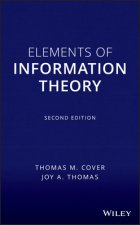
Elements of Information Theory
569.18 zł -

Cambridge IELTS 7 Student's Book with Answers
185.91 zł -

Meetings with Remarkable Men
71.24 zł -5 % -

Alfred Russel Wallace
77.11 zł -21 % -
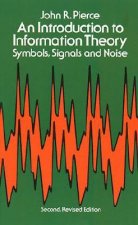
Introduction to Information Theory, Symbols, Signals and Noise
90.67 zł -5 % -
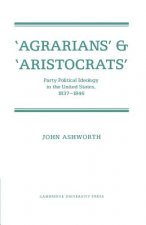
'Agrarians' and 'Aristocrats'
182.97 zł -

Social Dimensions of Autonomy in Language Learning
571.41 zł -

Biochemical and Chemical Changes of Fermented Melon Seeds
156.05 zł -5 % -
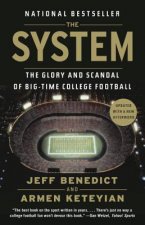
System
81.56 zł -10 % -
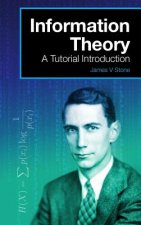
Information Theory
392.68 zł -

Spanish Doubloons
139.86 zł
Podaruj tę książkę jeszcze dziś
- Zamów książkę i wybierz "Wyślij jako prezent".
- Natychmiast wyślemy Ci bon podarunkowy, który możesz przekazać adresatowi prezentu.
- Książka zostanie wysłana do adresata, a Ty o nic nie musisz się martwić.
Powiadomienie o dostępności
Wpisz swój adres e-mail, aby otrzymać od nas powiadomienie,
gdy książka będzie dostępna. Proste, prawda?
Więcej informacji o Introduction to Information Theory
Za ten zakup dostaniesz 59 punkty
 Opis
Opis
PREFACE CHAPTER 1 Introduction 1-1. Communication Processes 1-2. A Model for a Communication System 1-3. A Quantitative Measure of Information 1-4. A Binary Unit of Information 1-5. Sketch of the Plan 1-6. Main Contributors to Information theory 1-7. An Outline of Information Theory Part 1 : Discrete Schemes without Memory CHAPTER 2 Basic Concepts of Probability 2-1. Intuitive Background 2-2. Sets 2-3. Operations on Sets 2-4. Algebra of Sets 2-5. Functions 2-6. Sample Space 2-7. Probability Measure 2-8. Frequency of Events 2-9. Theorem of Addition 2-10. Conditional Probability 2-11. Theorem of Multiplication 2-12. Bayes's Theorem 2-13. Combinatorial Problems in Probability 2-14. Trees and State Diagrams 2-15. Random Variables 2-16. Discrete Probability Functions and Distribution 2-17. Bivariate Discrete Distributions 2-18. Binomial Distribution 2-19. Poisson's Distribution 2-20. Expected Value of a Random Variable CHAPTER 3 Basic Concepts of Information Theory: Memoryless Finite Schemes 3-1. A Measure of Uncertainty 3-2. An Intuitive Justification 3-3. Formal Requirements for the Average Uncertainty 3-4. H Function as a Measure of Uncertainty 3-5. An Alternative Proof That the Entropy Function Possesses a Maximum 3-6. Sources and Binary Sources 3-7. Measure of Information for Two-dimensional Discrete Finite Probability Schemes 3-8. Conditional Entropies 3-9. A Sketch of a Communication Network 3-10. Derivation of the Noise Characteristics of a Channel 3-11. Some Basic Relationships among Different Entropies 3-12. A Measure of Mutual Information 3-13. Set-theory Interpretation of Shannon's Fundamental Inequalities 3-14. "Redundancy, Efficiency, and Channel Capacity" 3-15. Capacity of Channels with Symmetric Noise Structure 3-16. BSC and BEC 3-17. Capacity of Binary Channels 3-18. Binary Pulse Width Communication Channel 3-19. Uniqueness of the Entropy Function CHAPTER 4 Elements of Encoding 4-1. The Purpose of Encoding 4-2. Separable Binary Codes 4-3. Shannon-Fano Encoding 4-4. Necessary and Sufficient Conditions for Noiseless 4-5. A Theorem on Decodability 4-6. Average Length of Encoded Messages 4-7. Shannon's Binary Encoding 4-8. Fundamental Theorem of Discrete Noiseless Coding 4-9. Huffman's Minimum-redundancy Code 4-10. Gilbert-Moore Encoding 4-11. Fundamental Theorem of Discrete Encoding in Presence of Noise 4-12. Error-detecting and Error-correcting Codes 4-13. Geometry of the Binary Code Space 4-14. Hammings Single-error Correcting Code 4-15. Elias's Iteration Technique 4-16. A Mathematical Proof of the Fundamental Theorem of Information Theory for Discrete BSC 4-17. Encoding the English Alphabet Part 2: Continuum without Memory CHAPTER 5 Continuous Probability Distribution and Density 5-1. Continuous Sample Space 5-2. Probability Distribution Functions 5-3. Probability Density Function 5-4. Normal Distribution 5-5. Cauchy's Distribution 5-6. Exponential Distribution 5-7. Multidimensional Random Variables 5-8. Joint Distribution of Two Variables: Marginal Distribution 5-9. Conditional Probability Distribution and Density 5-10. Bivariate Normal Distribution 5-11. Functions of Random Variables 5-12. Transformation from Cartesian to Polar Coordinate System CHAPTER 6 Statistical Averages 6-1. Expected Values; Discrete Case 6-2. Expectation of Sums and Products of a Finite Number of Independent Discrete Random Variables 6-3. Moments of a Univariate Random Variable 6-4. Two Inequalities 6-5. Moments of Bivariate Random Variables 6-6. Correlation Coefficient 6-7. Linear Combination of Random Variables 6-8. Moments of Some Common Distribution Functions 6-9. Characteristic Function of a Random Variable 6-10. Characteristic Function and Moment-generating Function of Random Variables 6-11. Density Functions of the Sum of Two Random Variables CHAPTER 7 Normal Distributions and Limit Theorems 7-1. Bivariate Normal Considered as an Extension of One-dimensional Normal Distribution 7-2. MuItinormal Distribution 7-3. Linear Combination of Normally Distributed Independent Random Variables 7-4. Central-limit Theorem 7-5. A Simple Random-walk Problem 7-6. Approximation of the Binomial Distribution by the Normal Distribution 7-7. Approximation of Poisson Distribution by a Normal Distribution 7-8. The Laws of Large Numbers CHAPTER 8 Continuous Channel without Memory 8-1. Definition of Different Entropies 8-2. The Nature of Mathematical Difficulties Involved 8-3. Infiniteness of Continuous Entropy 8-4. The Variability of the Entropy in the Continuous Case with Coordinate Systems 8-5. A Measure of Information in the Continuous Case 8-6. Maximization of the Entropy of a Continuous Random Variable 8-7. Entropy Maximization Problems 8-8. Gaussian Noisy Channels 8-9. Transmission of Information in the Presence of Additive Noise 8-10. Channel Capacity in Presence of Gaussian Additive Noise and Specified Transmitter and Noise Average Power 8-11. Relation Between the Entropies of Two Related Random Variables 8-12. Note on the Definition of Mutual Information CHAPTER 9 Transmission of Band-limited Signals 9-1. Introduction 9-2. Entropies of Continuous Multivariate Distributions 9-3. Mutual Information of Two Gaussian Random Vectors 9-4. A Channel-capacity Theorem for Additive Gaussian Noise 9-5. Digression 9-6. Sampling Theorem 9-7. A Physical Interpretation of the Sampling Theorem 9-8. The Concept of a Vector Space 9-9. Fourier-series Signal Space 9-10. Band-limited Singal Space 9-11. Band-limited Ensembles 9-12. Entropies of Band-limited Ensemble in Signal Space 9-13. A Mathematical Model for Communication of Continuous Signals 9-14 Optimal Decoding 9-15. A Lower Bound for the Probability of Error 9-16. An Upper Bound for the Probability of Error. 9-17. Fundamental Theorem of Continuous Memoryless Channels in Presence of Additive Noise 9-18. Thomasian's Estimate Part 3 : Schemes with Memory CHAPTER 10 Stochastic Processes 10-1. Stochastic Theory 10-2. Examples of a Stochastic Process 10-3. Moments and Expectations 10-4. Stationary Processes 10-5. Ergodic Processes 10-6. Correlation Coefficients and Correlation Functions 10-7. Example of a Normal Stochastic Process 10-8. Examples of Computation of Correlation Functions 10-9. Some Elementary Properties of Correlation Functions Stationary Processes 10-10. Power Spectra and Correlation Functions 10-11. Response of Linear Lumped Systems to Ergodic Excitation 10-12. Stochastic Limits and Convergence 10-13. Stochastic Differentiation and Integration 10-14. Gaussian-process Example of a Stationary Process 10-15. The Over-all Mathematical Structure of the Stochastic Processes 10-16. A Relation between Positive Definite Functions and Theory of Probability CHAPTER 11 Communication under Stochastic Regimes 11-1. Stochastic Nature of Communication 11-2. Finite Markov Chains 11-3. A Basic Theorem on Regular Markov Chains 11-4. Entropy of a Simple Markov Chain 11-5. Entropy of a Discrete Stationary Source 11-6. Discrete Channels with Finite Memory 11-7. Connection of the Source and the Discrete Channel with Memory 11-8. Connection of a Stationary Source to a Stationary Channel Part 4 : Some Recent Developments CHAPTER 12 The Fundamental Theorem of Information Theory PRELIMINARIES 12-1. A Decision Scheme 12-2. The Probability of Error in a Decision Scheme 12-3. A Relation between Error Probability and Equivocation 12-4. The Extension of Discrete Memoryless Noisy Channels FEINSTEIN'S PROOF 12-5. On Certain Random Variables Associated with a Communication System 12-6. Feinstein's Lemma 12-7. Completion of the Proof SHANNON'S PROOF 12-8. Ensemble Codes 12-9. A Relation between Transinformation and Error Probability 12-10. An Exponential Bound for Error Probability WOLFOWITZ'S PROOF 12-11. The Code Book 12-12. A Lemma and Its Application 12-13. Estimation of Bounds 12-14. Completion of Wolfowitz's Proof CHAPTER 13 Group Codes 13-1. Introduction 13-2. The Concept of a Group 13-3. Fields and Rings 13-4. Algebra for Binary n-Digit Words 13-5. Hammings Codes 13-6. Group Codes 13-7. A Detection Scheme for Group Codes 13-8. Slepian's Technique for Single-error Correcting Group Codes 13-9. Further Notes on Group Codes 13-10. Some Bounds on the Number of Words in a Systematic Code APPENDIX Additional Notes and Tables N-1 The Gambler with a Private Wire N-2 Some Remarks on Sampling Theorem N-3 Analytic Signals and the Uncertainty Relation N-4 Elias's Proof of the Fundamental Theorem for BSC N-5 Further Remarks oil Coding Theory N-6 Partial Ordering of Channels N-7 Information Theory and Radar Problems T-1 Normal Probability Integral T-2 Normal Distributions T-3 A Summary of Some Common Probability Functions T-4 Probability of No Error for Best Group Code T-5 Parity-check Rules for Best Group Alphabets T-6 Logarithms to the Base 2 T-7 Entropy of a Discrete Binary Source BIBLIOGRAPHY NAME INDEX SUBJECT INDEX
 Szczegóły książki
Szczegóły książki
Kategoria Książki po angielsku Reference, information & interdisciplinary subjects Research & information: general Information theory
101.20 zł
- Pełny tytuł: Introduction to Information Theory
- Autor: Fazlollah M. Reza
- Język:
 Angielski
Angielski - Oprawa: Miękka
- Liczba stron: 528
- EAN: 9780486682105
- ISBN: 0486682102
- ID: 02569717
- Wydawca: Dover Publications Inc.
- Waga: 618 g
- Wymiary: 160 × 216 × 26 mm
- Data wydania: 28. March 2003
Ulubione w innej kategorii
-

The Black Swan
37.94 zł -26 % -
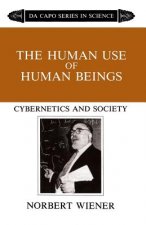
Human Use Of Human Beings
62.64 zł -10 % -

Problems of Life
81.26 zł -
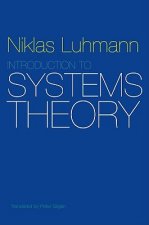
Introduction to Systems Theory
112.84 zł -2 % -

Linked
104.03 zł -
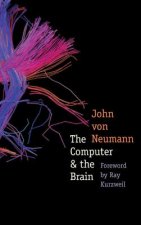
Computer and the Brain
80.35 zł -10 % -
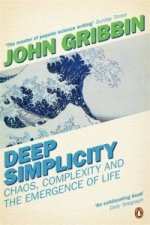
Deep Simplicity
52.21 zł -23 % -

Sync
52.21 zł -23 % -

Nonlinear Dynamics and Chaos
368.08 zł -

Introducing Chaos
43.10 zł -23 % -
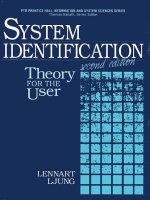
System Identification
567.76 zł -
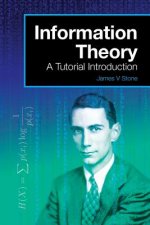
Information Theory
142.79 zł -

God & Golem, Inc.
172.85 zł -
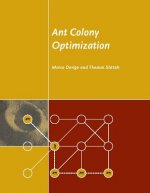
Ant Colony Optimization
39.16 zł -21 % -
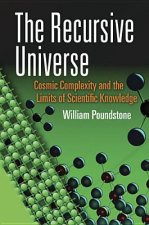
Recursive Universe
73.77 zł -5 % -

Repair
155.95 zł -6 % -

Ethics of Information
238.54 zł -
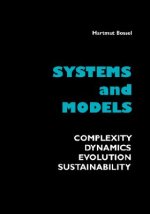
Systems and Models. Complexity, Dynamics, Evolution, Sustainability
113.85 zł -5 % -

Bioinformatics: An Introduction
571.41 zł -
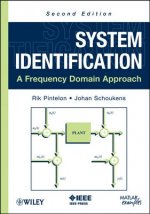
System Identification 2e - A Frequency Domain Approach
840.42 zł -
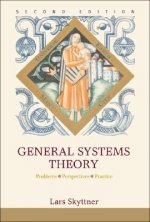
General Systems Theory: Problems, Perspectives, Practice
572.11 zł -5 % -

Modeling Business Processes
276.49 zł -12 % -
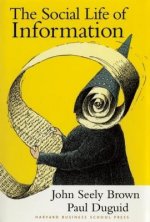
Social Life of Information
140.06 zł -

System Identification, Environmental Modelling, and Control System Design
878.57 zł -

Fault Tolerant Control Design for Hybrid Systems
571.41 zł -
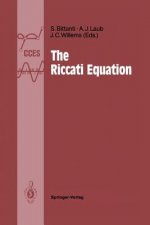
Riccati Equation
622.82 zł -
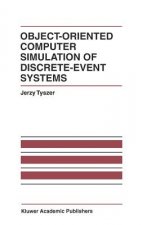
Object-Oriented Computer Simulation of Discrete-Event Systems
1288.05 zł -
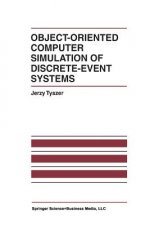
Object-Oriented Computer Simulation of Discrete-Event Systems
1288.05 zł -

Cybernetics or Control and Communication in the Animal and the Machine
255.44 zł -

Computational Beauty of Nature
302.90 zł -12 % -
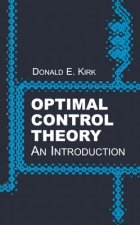
Optimal Control Theory
146.23 zł -5 % -
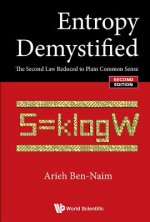
Entropy Demystified: The Second Law Reduced To Plain Common Sense
160.91 zł -

Student's Guide to Coding and Information Theory
168.30 zł -

Introduction to Complex Systems
622.82 zł -

On Dialogue
694.88 zł -

Design Structure Matrix Methods and Applications
284.08 zł -

Selected Works of Joseph E. Stiglitz
1158.51 zł -

Mathematical Systems Theory
289.95 zł -
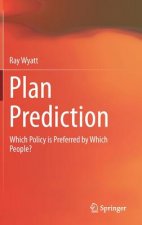
Plan Prediction
571.41 zł -
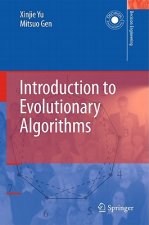
Introduction to Evolutionary Algorithms
1032.20 zł -

Introduction to Cybernetics
79.03 zł -
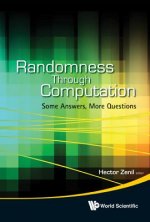
Randomness Through Computation: Some Answers, More Questions
843.05 zł -
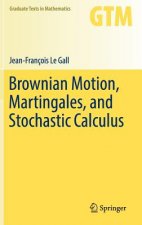
Brownian Motion, Martingales, and Stochastic Calculus
215.56 zł -
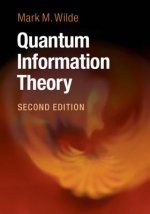
Quantum Information Theory
386.20 zł -

Seneca Effect
520.30 zł -

New Advances on Chaotic Intermittency and its Applications
571.41 zł -

Metaphysics of Virtual Reality
208.68 zł -
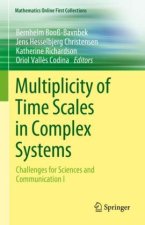
Multiplicity of Time Scales in Complex Systems
720.08 zł -

Knowledge-Based Intelligent System Advancements
960.45 zł
zadowolonych klientów
Od roku 2008 obsłużyliśmy wielu miłośników książek, ale dla nas każdy był tym wyjątkowym.
Copyright! ©2008-24 libristo.pl Wszelkie prawa zastrzeżonePrywatnieCookies


 21 milionów książek
21 milionów książek Dostawa 10.99 zł
Dostawa 10.99 zł (32) 444 93 66 (8-15.30h)
(32) 444 93 66 (8-15.30h)